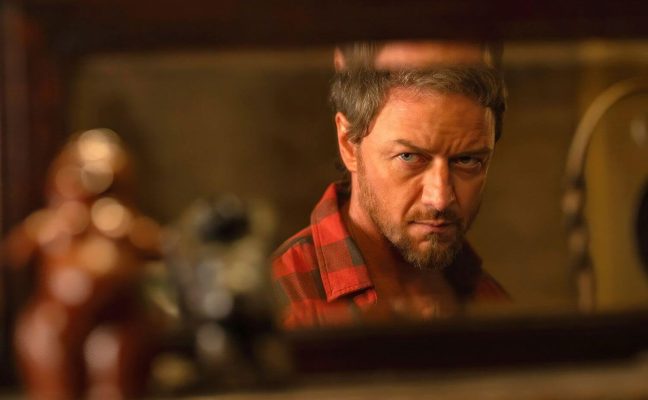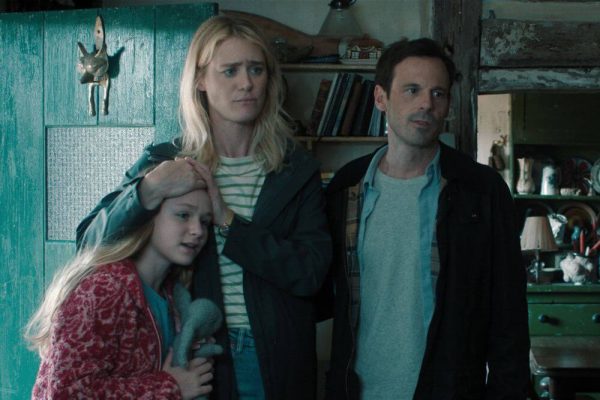World News
Unraveling the Dark Twists: James McAvoy and Director James Watkins Discuss the Ending of Speak No Evil
The Horror Genre’s Masterful New Addition
Speak No Evil, directed by James Watkins and starring the versatile James McAvoy, has taken the horror world by storm with its dark, unnerving narrative. The film blends psychological tension with elements of slow-burn terror, creating a chilling atmosphere that keeps audiences on edge until the very end. In a recent interview, McAvoy and Watkins sat down to dissect the movie’s deeply unsettling conclusion, which has left viewers both shocked and captivated. The discussion sheds light on the intricate process behind crafting an ending that is both disturbing and thought-provoking, a hallmark of effective modern horror.
From the very beginning, Speak No Evil sets itself apart from other horror films by focusing not just on jump scares or graphic violence but on the emotional and psychological manipulation of its characters. The tension builds gradually, driven by a hauntingly realistic portrayal of human vulnerability and social anxieties. McAvoy’s portrayal of the protagonist grappling with sinister forces adds layers of complexity to the story, culminating in an ending that is as horrifying as it is emotionally charged.

James McAvoy’s Approach to His Role
James McAvoy, known for his range in portraying complex characters, brings a remarkable depth to his role in Speak No Evil. His performance is nuanced, capturing the internal conflict of a man who is thrust into a terrifying situation that slowly spirals out of control. McAvoy’s character, much like the audience, is kept in a state of confusion and unease, making the film’s conclusion all the more impactful. His ability to convey subtle shifts in emotion plays a key role in building the film’s suspense, and it is clear that McAvoy approached the role with meticulous attention to detail.
In the interview, McAvoy shared how he was drawn to the script’s psychological elements, which allowed him to explore the fragility of human relationships under extreme duress. The subtle manipulation and the social awkwardness that escalates into something much darker intrigued McAvoy, and he emphasized the importance of grounding the horror in real human experiences. This approach makes the film’s horrifying conclusion feel earned, rather than a gratuitous shock, providing a deeper emotional resonance that stays with the audience long after the credits roll.
Crafting the Unsettling Atmosphere: James Watkins’ Vision
Director James Watkins is no stranger to the horror genre, having crafted films that thrive on tension and dread. With Speak No Evil, Watkins aimed to create a slow-burn horror film that gradually tightens the noose around both the characters and the audience. Watkins’ expertise in building atmosphere is evident throughout the film, with each scene carefully designed to elicit discomfort and fear. The director’s use of subtle cues—whether it be through awkward social interactions, eerie silences, or unsettling sound design—contributes to a growing sense of dread that permeates the entire narrative.
Watkins described the film as a study of human vulnerability and how easily trust can be exploited. He explained that the goal was to make viewers question the safety of seemingly mundane interactions, pushing the boundaries of social etiquette to their breaking point. By the time the film reaches its climax, the audience is left feeling as if they, too, have been manipulated, trapped in the same nightmare as the characters. Watkins’ skillful direction ensures that the tension remains high throughout, with the ending delivering a gut-punch that is as shocking as it is inevitable.

Breaking Down the Film’s Shocking Ending
The ending of Speak No Evil has been a major talking point among both critics and audiences. Without giving away spoilers, the conclusion subverts traditional horror tropes, offering an ending that is not only unexpected but also deeply unsettling on an emotional level. In the interview, both McAvoy and Watkins discussed the thought process behind crafting such a dark and ambiguous finale. Rather than opting for a neatly wrapped-up conclusion, the filmmakers chose to leave certain elements open to interpretation, allowing the horror to linger in the minds of viewers.
McAvoy explained that the film’s ending is a reflection of the moral dilemmas faced by his character throughout the narrative. The tension between doing what is socially expected versus what is necessary for survival comes to a head in the final moments, leaving both the character and the audience grappling with difficult questions. Watkins added that the ending was designed to challenge the audience, forcing them to confront their own discomfort with ambiguity and moral ambiguity.
By choosing not to offer a clear resolution, Speak No Evil elevates itself from a typical horror film to a psychological thriller that leaves a lasting impression. The film’s conclusion invites multiple interpretations, encouraging viewers to reflect on the broader themes of trust, fear, and societal pressures that run throughout the story.
Taylor Swift Honey I Rose Up From The Dead I Do It All The Time Design Hoodie
The Impact of Speak No Evil on the Horror Genre
Speak No Evil has already been hailed as a significant contribution to the modern horror genre, particularly for its reliance on psychological tension rather than traditional scares. Both McAvoy and Watkins emphasized that their goal was to create a film that would provoke thought and discussion, rather than simply aiming for cheap thrills. In doing so, the film has garnered praise for its unique approach to horror, combining emotional depth with a sense of escalating dread that culminates in a deeply unsettling ending.
The film’s success is a testament to the power of character-driven horror, where the fear comes not from external monsters or supernatural forces, but from the breakdown of trust and the fragility of social norms. Speak No Evil taps into primal fears about vulnerability and betrayal, using the horror genre as a vehicle to explore deeper human emotions and anxieties. As such, the film has positioned itself as a standout in a genre that often relies on formulaic plotlines and jump scares.
For fans of James McAvoy and director James Watkins, Speak No Evil offers a masterclass in psychological horror, and its haunting ending ensures that it will remain a topic of discussion for years to come. By blending emotional complexity with terrifying suspense, the film challenges both its characters and its audience to confront the darker aspects of human nature, leaving a lasting impact that is difficult to shake.
From cathottees

